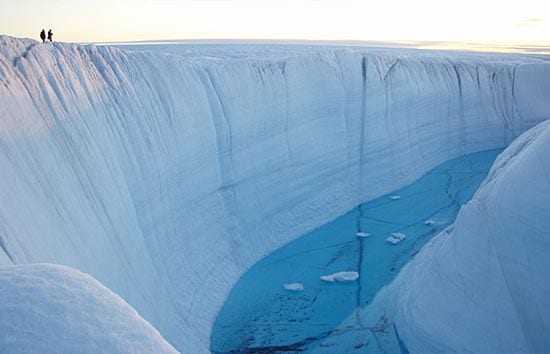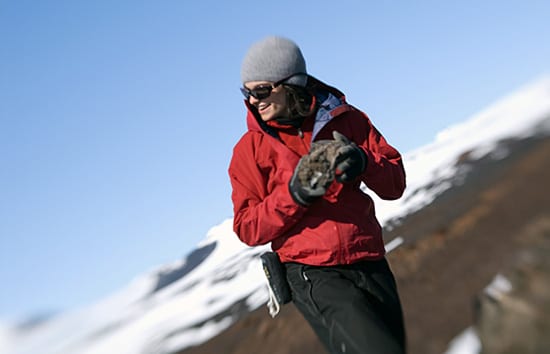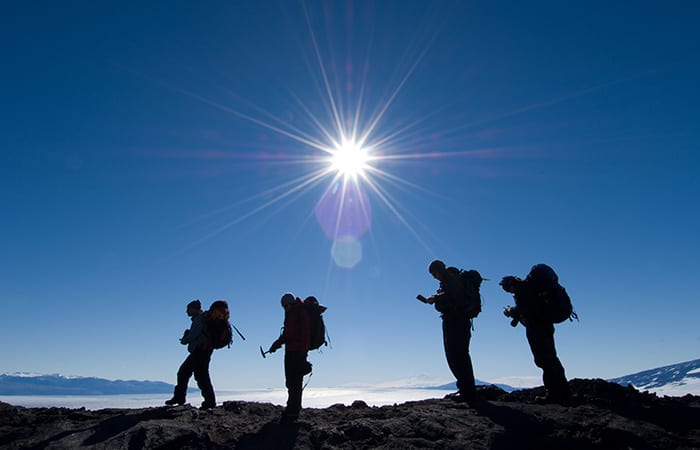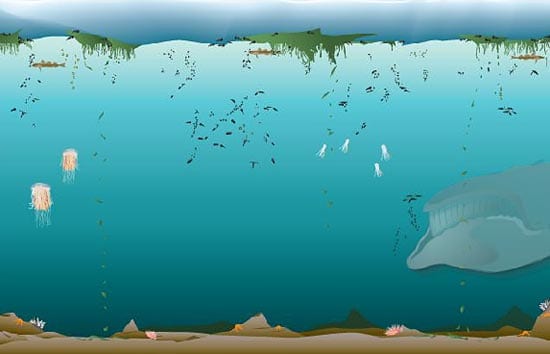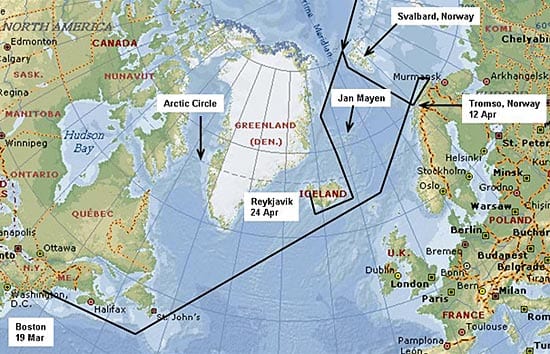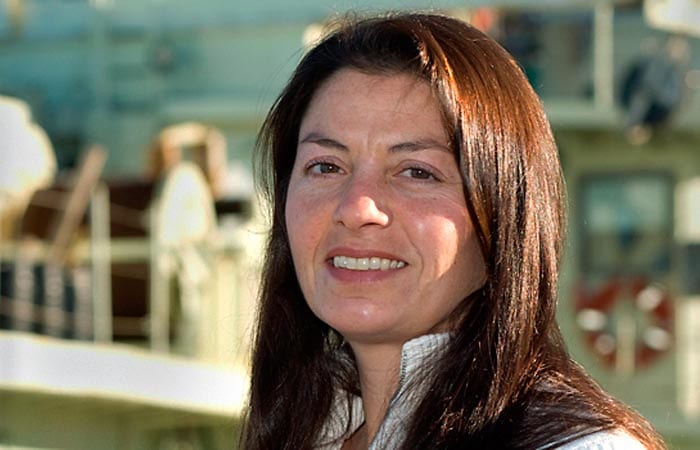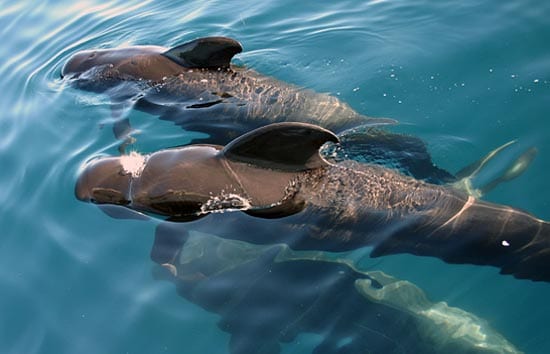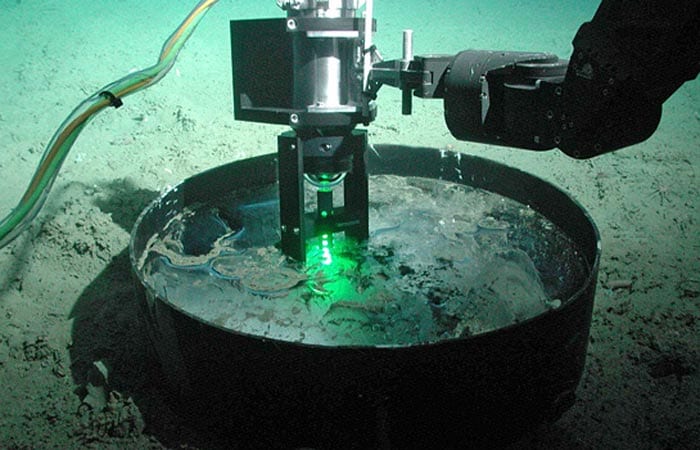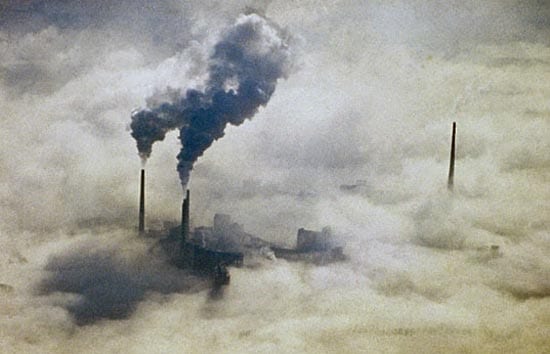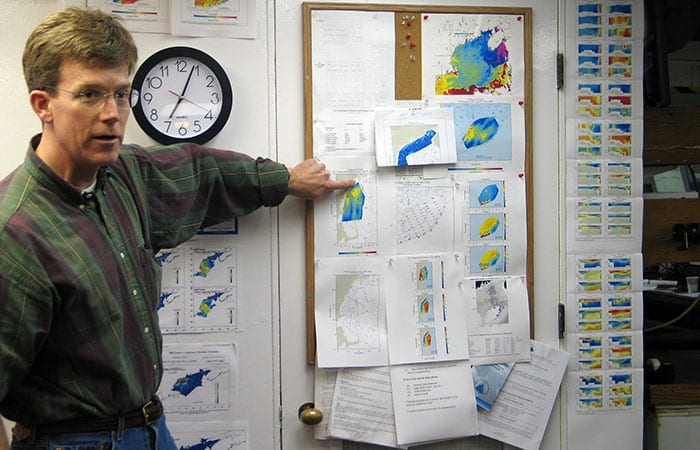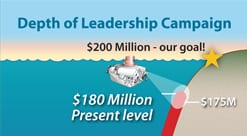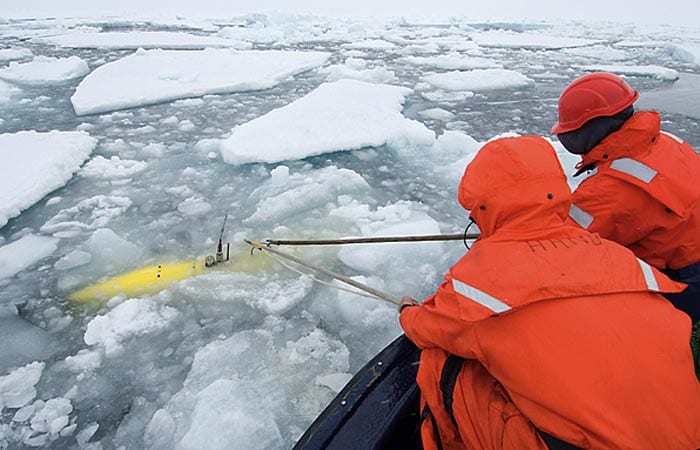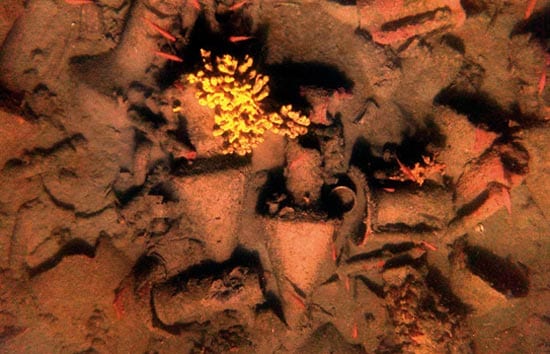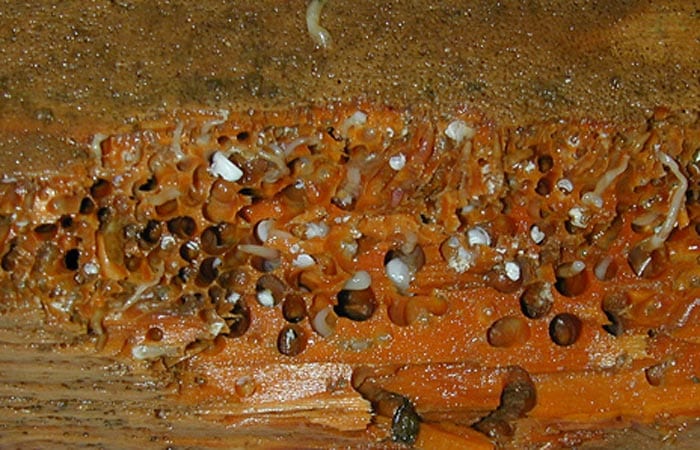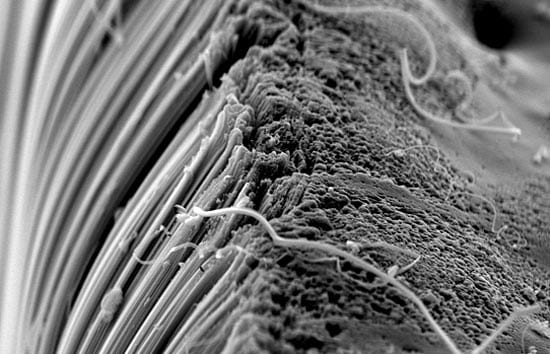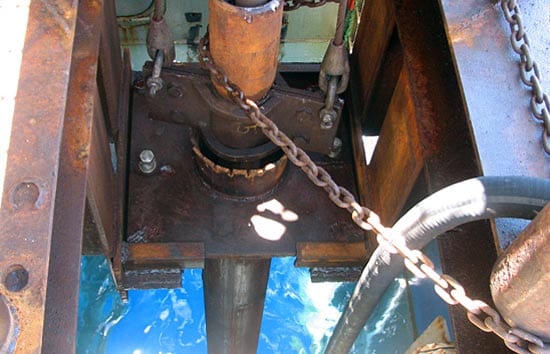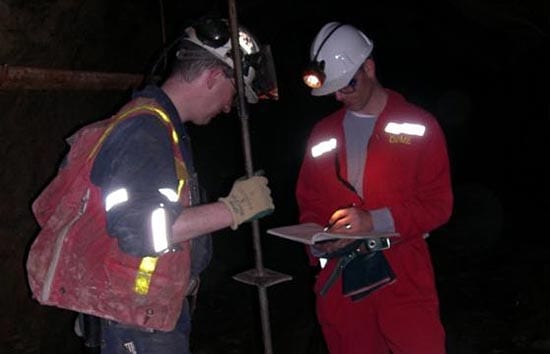Feature
Crack! A Lake Atop Greenland Disappears
In late July 2006, a 2.2-square-mile lake atop the Greenland Ice Sheet sprung a leak. Like a draining bathtub, the entire lake emptied from the bottom, sending water through a…
Read MoreAntarctic Andrea
The sound of boots crunching on brick-red gravel filled the thin Antarctic air. Three scientists—geologists from Woods Hole Oceanographic Institution (WHOI)—had been climbing for 30 minutes, staring at their feet…
Read MoreEarth, Wind, and Fire in Antarctica
From a windy, isolated camp in southern Victoria Land, Antarctica, three scientists from Woods Hole Oceanographic Institution explore how the waterless, lifeless, volcanic terrain formed and evolved. Read the story…
Read MoreWill Climate Change Disrupt the Arctic Ecosystem?
After long, dark winters, sunlight returns to the Bering Sea in spring, re-launching a bountiful food chain that fills the Arctic with life. In March 2008, an ambitious research team,…
Read MoreKnorr Skirts Ice to Search for ‘Arctic Haze’
In the late 1950s, pilots flying over the Arctic began having trouble seeing long distances, their vision cut short by a mysterious, reddish-brown fog. What they were seeing is now…
Read MoreShe’s Got the Whole Fleet in Her Hands
For oceanographers, going to sea isn’t as simple as driving to the dock, climbing on board a ship, and motoring away. The process takes an average of two or more…
Read MorePopular Way to Assess Oil Spills Can Be Misused
Environmental assessment teams increasingly may be using a method to assess oil spill contamination in situations where it doesn’t work well and are in danger of reaching false conclusions, a…
Read MorePilot Whales the ‘Cheetahs of the Deep Sea’
Scientists tag whales and find they sprint-dive to forage, hunting like undersea cheetahs.
Read MoreCan’t Bring Deep-sea Samples Up? Send a Lab Down.
Much of what is surprising about the deep ocean results from the extraordinary conditions found there—frigid temperatures, crushing pressure, unusual chemical and biological processes, and the complete absence of sunlight.…
Read MoreThe Oceans Feel Impacts from Acid Rain
The release of sulfur and nitrogen into the atmosphere by power plants and agricultural activities is making seawater more acidic, especially in coastal waters, according to a study published September…
Read MoreWHOI Scientists Earn Laurels
WHOI geochemist Stanley Hart is the 13th recipient of the Arthur L. Day Prize and Lectureship, awarded by the U.S. National Academy of Sciences for making lasting contributions to the…
Read MoreCapital Campaign Heads into Homestretch
With $180 million already committed, the WHOI $200 million Depth of Leadership campaign has reached 90 percent of its goal, heading into its final year. “This is a remarkable achievement,…
Read MoreSusan Avery Takes the Helm at WHOI
With the first hints of autumn reaching Woods Hole last October, change of a different sort was in the air. On the same day that Harvard University trumpeted the installation…
Read MoreArctic Voyage Tests New Robots for Ice-covered Oceans
In the summer of 2007, an international team led by scientists at Woods Hole Oceanographic Institution sailed to the Arctic Ocean aboard the Swedish icebreaker Oden. Their missions: to test…
Read MoreDNA in Shipwrecked Jars Reveals Clues to Ancient World
Scraping inside clay jars recovered from a 2,400-year-old shipwreck, two researchers found DNA fragments that revealed the jars’ long-disappeared probable cargo: oregano, olive oil, and wine. The genetic technique, developed…
Read MoreOcean Observatories Initiative Poised to Launch
Woods Hole Oceanographic Institution (WHOI) was awarded a $97.7 million grant to help build a decades-long dream of ocean scientists: networks of ocean observatories that can monitor conditions in critical…
Read MoreHappy as a (Newly Discovered) Clam
Aboard a research ship in 1997, Janet Voight was amazed when she examined a small log that researchers just happened to trawl up from the bottom of the sea: It…
Read MoreProtecting Public Health by Preventing Pollution
Growing up in Maine, Desirée Plata watched her grandmother suffer from illnesses that she suspected were related to trichloroethylene—a colorless liquid, used as a solvent for cleaning metal parts, that…
Read MoreMaking Nanotubes Without Harming the Environment
They are 10,000 times thinner than a strand of human hair, yet stronger than steel, more durable than diamonds, and able to conduct heat and electricity with efficiency that rivals…
Read MoreA Sea Change in National Ocean Policy?
Early in the new century, two national commissions conducted the first thorough reviews in a generation of the nation’s policy for the oceans. Their two reports were received with fanfare…
Read MoreKnorr Shoots the Moon (Pool) to Drill for Coral
The Knorr’s so-called “moon pool” is a section of the hull that can be removed to give scientists direct access from the deck to the sea.
Read MoreMining the Origins of Life
New System to Take Long Seafloor Cores Is Ready to Go
Over five years, engineers had designed, built, and tested components for a new, one-of-a-kind system to extend the length of sediment samples cored from the sea floor. In September, they…
Read MoreSome Things New Under the Sea
New microbe species discovered In the quest to explore the remarkable diversity of microbial life on Earth, a German-American team of scientists has discovered seafloor bacteria that can “eat” natural…
Read More
